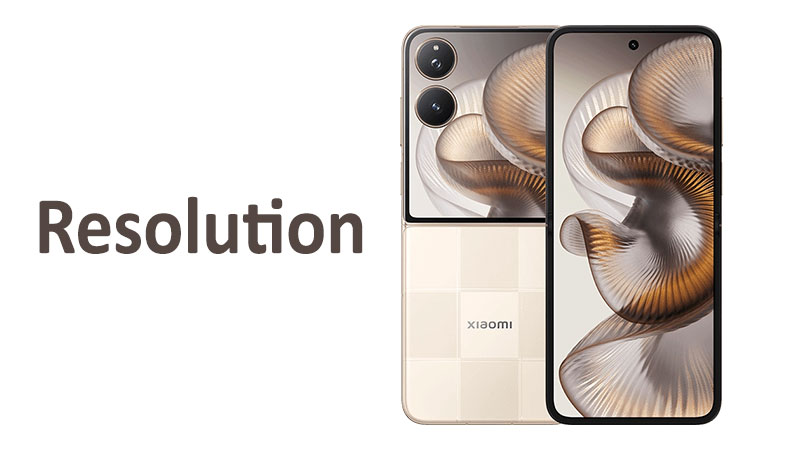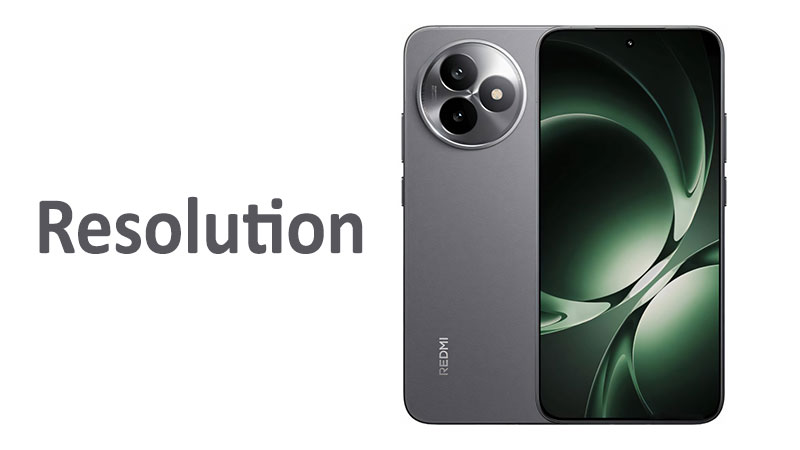The Apple iPhone 15 Plus display is the central focus of the entire device experience. It is the primary way users interact with their phone. The quality of this large screen dictates everything from how engaging movies look to how easily you can read text outdoors. The iPhone 15 Plus offers a significant 6.7-inch screen size. This size makes it ideal for media consumption and gaming. Apple calls this technology the Super Retina XDR OLED display. This naming signals high-end specifications and premium performance. This article provides a comprehensive review of the display. We will examine its key specifications, including resolution, brightness, and protection. We will also compare its quality against the competition. Understanding these details helps buyers appreciate the phone’s visual capabilities.
Technical Specifications and Display Technology
The quality of the iPhone 15 Plus screen starts with its underlying technology. Apple’s Super Retina XDR branding is a promise of exceptional contrast and color accuracy. The specifications detail the screen’s technical advantages. They explain why the visuals look so stunning.
Super Retina XDR OLED Technology
The iPhone 15 Plus uses an OLED panel, which stands for Organic Light-Emitting Diode. This technology is superior to traditional LCD screens. OLED displays do not require a backlight. Instead, each individual pixel emits its own light.
This self-emissive nature allows for true black levels. When a pixel displays black, it is simply turned off. This results in an infinite contrast ratio. The Super Retina XDR label signifies Apple’s particular tuning of this OLED panel. It guarantees extremely high color fidelity and a wide dynamic range. This high-end display produces vibrant and realistic imagery.
Size, Resolution, and Pixel Density
The physical dimensions and pixel arrangement are vital for screen clarity. The iPhone 15 Plus offers a substantial canvas for content.
The screen size measures 6.7 inches diagonally. This large size provides an expansive viewing area for multitasking and entertainment. The screen-to-body ratio is approximately 88.0%. This means the display takes up most of the phone’s front surface. The bezels surrounding the screen are quite thin.
The resolution is set at 1290 x 2796 pixels. This is a slightly uncommon resolution. However, it maintains the standard 19.5:9 aspect ratio. This resolution results in an impressive pixel density of approximately 460 pixels per inch (ppi). At this density, individual pixels are virtually indistinguishable to the human eye. The image appears perfectly sharp and detailed. This sharpness is critical for text, photos, and high-definition video.
High Dynamic Range (HDR) Support
The iPhone 15 Plus fully supports modern high dynamic range formats. These formats dramatically enhance video content. They allow for a much greater range between the darkest and brightest parts of a scene.
The display supports both HDR10 and Dolby Vision. Dolby Vision is considered a superior standard. It uses dynamic metadata to optimize the picture quality scene-by-scene. The iPhone 15 Plus display is an exceptional portable screen for HDR content. It accurately reproduces the dramatic lighting effects and color nuances intended by filmmakers. This support is a major advantage for streaming media enthusiasts.
Brightness: A Key Quality of the iPhone 15 Plus Display
Screen brightness is a crucial factor for real-world usability. A bright display is essential for visibility outdoors in sunlight. The iPhone 15 Plus boasts significantly improved brightness levels over previous models. This makes it a class leader in terms of outdoor screen performance.
High Brightness Mode (HBM) and Typical Luminance
The typical maximum brightness for the iPhone 15 Plus display is around 1000 nits in High Brightness Mode (HBM). This 1000 nits level is sustained for viewing content like standard photos or web pages. It ensures excellent visibility even under bright office lights.
In regular, everyday use, the display is bright and legible. When compared to the iPhone 14 Plus, this sustained brightness shows a clear improvement. This makes the screen comfortable to look at in almost any indoor environment. The colors remain accurate even at these high luminance levels.
Peak Brightness for HDR Content
The display can push its brightness even further when displaying specific content. It achieves an incredible 2000 nits (peak) brightness. This extreme brightness level is activated when viewing HDR content, such as a movie or high-contrast HDR photos.
This peak brightness is not sustained across the entire screen. It is reserved for small areas, like reflections or light sources in a video. This high peak brightness is what delivers the stunning impact of HDR content. It creates a vivid, lifelike experience. When walking outside on a sunny day, the screen also utilizes this peak mode. It temporarily boosts the entire screen’s visibility, making it easy to read text.
Specialized Comparison: Brightness vs. iPhone 14 Plus
The iPhone 15 Plus brought a major step up in brightness compared to the iPhone 14 Plus. The iPhone 14 Plus typically offered a peak brightness of 1200 nits for HDR content. The iPhone 15 Plus almost doubles that peak to 2000 nits.
This difference is highly noticeable in two primary scenarios. First, watching high-quality HDR movies is more impactful on the 15 Plus. Second, outdoor usability is dramatically improved. The screen remains much clearer when exposed to direct sunlight. This brightness upgrade is one of the most significant visual improvements in the new generation.
Display Quality: Color Accuracy and Dynamic Island
Beyond the raw specifications, the subjective quality of the display is outstanding. Apple’s calibration ensures perfect color accuracy and consistency. The introduction of the Dynamic Island also enhances the user experience.
Color Accuracy and Calibration
Apple employs meticulous, factory-level calibration for every Super Retina XDR display. This process guarantees industry-leading color accuracy. The iPhone 15 Plus covers a wide color gamut, specifically the P3 wide color space.
This accuracy is essential for photographers and designers. It ensures that colors viewed on the phone match the true standards of professional displays. Whites appear clean and neutral. Colors are vivid without being oversaturated, which can happen on some competitor screens. The overall visual fidelity is extremely high.
The Dynamic Island Feature
The Dynamic Island is a crucial design change in the iPhone 15 Plus display. It replaces the traditional notch cutout found on older models. The Dynamic Island is a pill-shaped area at the top of the screen. It cleverly masks the front camera and Face ID components.
More importantly, it is an active user interface element. It dynamically changes size and shape to display relevant information. This includes incoming calls, Face ID verification, and background activity. For example, it shows music playback, timers, and directions. This feature turns a necessary cutout into an engaging and functional part of the display. It enhances the multitasking experience.
Comparison: Dynamic Island vs. The Notch
The introduction of the Dynamic Island represents a major aesthetic and functional upgrade over the notch. The notch was static. It was simply a cutout that took up space. The Dynamic Island, however, is interactive. It subtly delivers information without distracting from the main content. This change improves the perceived screen-to-body ratio. It also makes the iPhone 15 Plus look more modern and premium. It aligns the non-Pro models with the design language previously exclusive to the Pro line.
Screen Protection: The Ceramic Shield
The durability of the display is just as important as its visual quality. The iPhone 15 Plus features Apple’s Ceramic Shield glass technology. This is one of the toughest forms of smartphone screen protection currently available.
Composition and Durability
Ceramic Shield is a proprietary material. It is manufactured by introducing nano-ceramic crystals into the glass matrix. These crystals are transparent and extremely hard. They provide significantly greater toughness than standard smartphone glass.
Apple specifically engineered the Ceramic Shield to improve drop performance. It is four times more resistant to drops than the glass on older iPhones. While no phone screen is completely unbreakable, Ceramic Shield offers best-in-class protection against accidental drops and impacts. This provides users with a measure of confidence.
Scratch Resistance
While extremely hard, Ceramic Shield’s drop resistance is slightly balanced by its scratch resistance. It is highly resistant to deep scratches from keys or coins. However, it can still accumulate micro-scratches from harder particles like quartz sand. These micro-scratches can become noticeable over time. Consequently, many buyers still choose to apply an additional screen protector. It provides total protection against daily wear and tear.
Specialized Comparison: Ceramic Shield vs. Gorilla Glass Victus
Ceramic Shield competes directly with Corning’s advanced Gorilla Glass compositions, such as Victus. Both technologies represent the pinnacle of smartphone glass engineering.
Gorilla Glass Victus often focuses on maximizing both scratch and drop resistance in a balanced way. Ceramic Shield is generally considered the industry leader in pure drop performance. This difference reflects Apple’s priority. They aim to reduce the risk of catastrophic screen breaks from accidental falls. The Ceramic Shield remains one of the most significant durability features of the iPhone 15 Plus.
Pros and Cons of the iPhone 15 Plus Display
The large Super Retina XDR display is a major selling point for the iPhone 15 Plus. However, it has specific features that may not appeal to every advanced user. A balanced review requires looking at both its strengths and weaknesses.
Pros of the iPhone 15 Plus Display
The screen offers numerous advantages that enhance the user experience.
- Exceptional Brightness: The 2000 nits peak brightness makes the screen effortlessly viewable outdoors in sunlight.
- Stunning Visual Quality: OLED technology provides perfect blacks and infinite contrast.
- Precise Color Accuracy: Factory calibration ensures accurate and vivid reproduction of the P3 wide color gamut.
- Dynamic Island: This feature innovatively blends hardware and software. It creates a useful and engaging interface element.
- Superior Durability: The Ceramic Shield glass offers top-tier protection against drops and screen breakage.
Cons of the iPhone 15 Plus Display
Two primary drawbacks limit the iPhone 15 Plus display compared to its Pro siblings and some competitors.
- Standard Refresh Rate: The display uses a fixed 60Hz refresh rate. It does not offer the ProMotion 120Hz refresh rate found on the Pro models.
- No Always-On Display: The phone lacks the ability to show time and notifications constantly. This feature is reserved for the Pro models.
Key Takeaways for Buyers
Buyers need to understand the implications of the 60Hz refresh rate. The iPhone 15 Plus screen is visually superb for watching movies and looking at photos. However, scrolling and gaming will feel slightly less smooth than on a 120Hz ProMotion screen.
If you prioritize content consumption and outdoor visibility, the iPhone 15 Plus display is fantastic. If you value buttery-smooth scrolling and responsiveness above all else, you might prefer the Pro model. The overall quality, brightness, and size of the Plus model still make it one of the best displays on the market. It is an excellent choice for most consumers.
Specialized Comparison: 60Hz vs. 120Hz ProMotion
The most frequently discussed difference between the iPhone 15 Plus and the Pro models is the refresh rate. Understanding this technical distinction is crucial for buyers.
The 60Hz Refresh Rate on the iPhone 15 Plus
Refresh rate measures how many times per second the screen updates the image. A 60Hz rate means the screen refreshes 60 times every second. This rate has been the industry standard for years. It is perfectly adequate for all forms of video content, which typically run at 24, 30, or 60 frames per second.
The iPhone 15 Plus’s 60Hz screen is highly responsive. It delivers a great experience for general use. However, it is a fixed rate. It cannot dynamically adjust its refresh speed.
The ProMotion 120Hz Advantage
The Pro models feature Apple’s ProMotion technology. This allows the screen to refresh dynamically from 1Hz up to 120Hz. The 120Hz refresh rate makes fast motion appear twice as smooth as 60Hz.
This smoothness is particularly noticeable when scrolling through webpages or app feeds. It creates a premium, fluid interaction. Furthermore, the ability to drop the rate down to 1Hz enables the Always-On display. The iPhone 15 Plus cannot offer the Always-On feature due to its fixed 60Hz limitation. For smooth scrolling enthusiasts, this difference can be significant. However, many users transitioning from older phones will not notice the absence of 120Hz.
Conclusion
The Apple iPhone 15 Plus display is an absolutely stunning screen. It boasts a large 6.7-inch size and a crisp 1290 x 2796 pixel resolution. The Super Retina XDR OLED technology delivers perfect blacks and vibrant, accurate colors. The most compelling upgrade is the brightness. With a peak luminance of 2000 nits, it ensures exceptional visibility for both HDR content and bright outdoor conditions. The inclusion of the Dynamic Island transforms the screen’s cutout into a useful, interactive feature.
While the display retains a fixed 60Hz refresh rate, its overall visual quality is uncompromising. The screen is also protected by the durable Ceramic Shield glass. This significantly enhances its resistance to accidental drops. The iPhone 15 Plus display is a clear winner for media lovers and outdoor users. If 120Hz scrolling is not your top priority, this screen offers one of the best viewing experiences on any smartphone today.
FAQ
What type of screen technology does the iPhone 15 Plus use?
It uses a Super Retina XDR OLED panel. This technology allows for perfect black levels and superior contrast.
Does the iPhone 15 Plus have the Dynamic Island?
Yes, the iPhone 15 Plus features the Dynamic Island. This replaces the older notch cutout at the top of the display.
What is the maximum brightness of the iPhone 15 Plus display?
The display achieves a peak brightness of 2000 nits when viewing HDR content or in direct sunlight.
What is the refresh rate of the iPhone 15 Plus screen?
The iPhone 15 Plus uses a standard 60Hz refresh rate. It does not support the ProMotion 120Hz feature found on the Pro models.
Does the iPhone 15 Plus screen have an Always-On display feature?
No, the iPhone 15 Plus does not support an Always-On display. This feature is exclusive to the Pro models with their 120Hz ProMotion screens.



